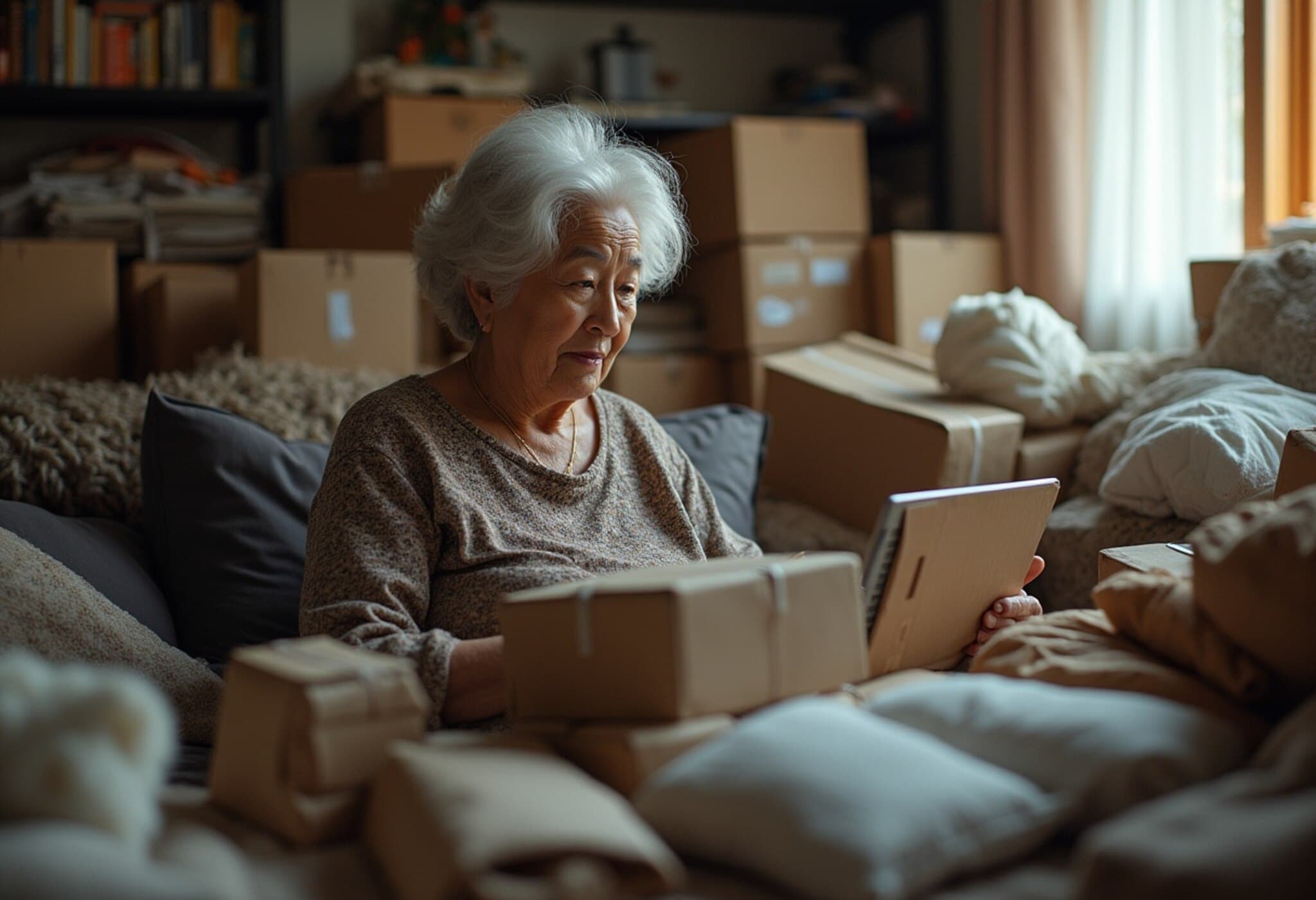Shanghai Woman’s Unprecedented Spending Habit Raises Community Alarm
In a striking example of compulsive buying behavior, a 66-year-old woman in Shanghai has reportedly spent over 2 million yuan (approximately Rs 2.3 crore) on online purchases, according to investigative reporting by the South China Morning Post (SCMP). Known only as Ms. Wang, she resides alone in Jiading district, where her home has become overwhelmed by unopened parcels, stacked so high that she claims there is no room left to sleep.
From Excitement to Excess: Understanding the Psychology Behind the Spending
Ms. Wang admits that her online shopping provides her with an emotional thrill. “I feel excited when I buy things online,” she confided in SCMP. Most of her purchases are made during livestream shopping sessions, commonly involving cosmetics, health supplements, and even gold jewelry.
Interestingly, Wang revealed she sometimes spends extravagantly to deter acquaintances from asking for money. “When they see piles of stuff in my home, they will feel it is not appropriate to ask me to lend them money,” she explained.
Expansion of Storage and Growing Community Concerns
As her collection outgrew her primary flat, Ms. Wang acquired a second apartment nearby and also utilizes her underground garage for storage. To accommodate the overflow, she has even rented an additional flat exclusively to store her belongings.
This excessive accumulation has triggered complaints among her neighbors, who report unpleasant odors and visible infestations of cockroaches and flies around the vicinity of her residence.
Family and Community Efforts to Intervene
A local residential committee disclosed that Wang’s daughter resides overseas, with relatives seldom visiting. In an effort to address the problem, the committee intervened last year, organizing a clean-up operation with Wang’s consent, hoping family involvement would encourage change. However, Wang has persisted with her hoarding behavior.
Expert Insights into Hoarding and Mental Health
Shanghai-based psychiatrist Dr. Shi Yanfeng of the Shanghai Mental Health Centre offers critical context: hoarding often signals deeper mental health struggles such as depression or social anxiety. “Hoarding is not merely about clutter; it usually reflects a long-term mental health issue that requires consistent care and attention,” Dr. Yanfeng emphasizes.
Broader Social Implications: Loneliness Among the Elderly
The viral nature of the story on Chinese social media has sparked an important dialogue. Many commenters suggest that loneliness is at the heart of Wang’s behavior, calling on younger generations to take a more active role in the wellbeing of elderly family members.
Reflections on Consumerism and Isolation in Modern Urban Life
Wang’s case shines a spotlight on a growing but frequently overlooked issue within metropolitan societies: the intersection of compulsive consumerism and social isolation, especially among the elderly. In an era dominated by digital shopping platforms and livestream commerce, vulnerable individuals may find temporary solace in acquisition — turning consumption into a coping mechanism amidst loneliness.
From a wider policy perspective, this story poses critical questions for social services and community health programs worldwide. How can public health systems better identify and support individuals vulnerable to compulsive behaviors intensified by isolation? What role can families, neighbors, and social organizations play in creating safer, more connected environments?
Summary
- Ms. Wang has spent over Rs 2.3 crore on online shopping, amassing goods she never opens.
- The volume of her purchases led her to acquire additional flats just for storage.
- Neighbors report hygiene issues and pest infestations linked to her hoarding.
- Mental health experts link hoarding to underlying conditions like anxiety and depression.
- The story underscores loneliness and social isolation issues among the elderly in urban settings.
Editor's Note
Wang’s story is more than an extraordinary case of consumer excess; it is a poignant reminder of the complex emotional and psychological dimensions behind compulsive spending and hoarding. As cities grow and digital shopping becomes ever more accessible, society must reckon with the human costs shadowed behind convenience and consumption. This case invites us to reconsider how social isolation impacts mental health and to reflect on community responsibilities toward vulnerable populations, especially aging individuals living alone.













